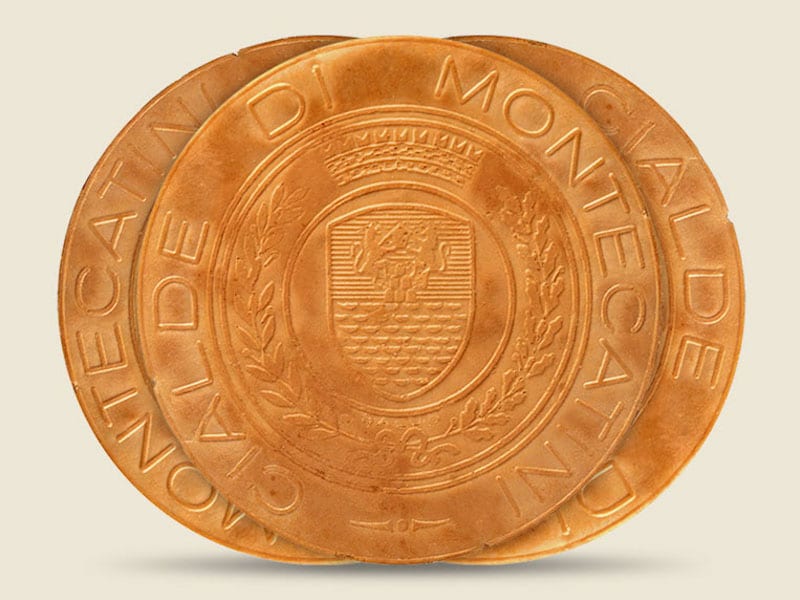Learn the history of a simple, sweet Tuscan wafer that can be deliciously enjoyed with Vin Santo Occhio di Pernice.
Montecatini is known worldwide for its spa facilities which host international tourists, eager to benefit from the healing waters that flow into its territory. This small and stylish city is also a delightful oasis for lovers of luxury shopping and crafts, for fans of golf and horse. Of course, Montecatini offers all the culinary delights of Tuscany, so it is also an important meeting place for lovers of good food. From your trip in Tuscany you must not forget to bring a pack of the famous “Cialde di Montecatini” pastries (Montecatini Wafers).
The story tells that the “Cialde” were created in the 1920s in the beautiful Tuscan city from a family of Czechoslovak Jews confectioners. In that period, Montecatini was the brilliant and prosperous town of Belle Epoque, frequented by high society, attracted by its healing waters and elegant atmosphere. The “Cialde” were an instant success. In the early thirties, began the hard times for the Jews. In 1936, the Czechoslovak family decided, for their own safety, to leave Italy and transfer the pastry business. It was not easy to sell the business. Many tried to speculate knowing that this unfortunate Jewish family had to quickly leave Italy because of the racial laws. The solution came from Orlando Bargilli who took over the bakery at a fair price, also inheriting the original recipe which later changed. Orlando Bargilli, a former blacksmith, worked in the Railways. He was saved from a serious accident at work. He decided to leave his work in the railroad to become a pastry chef and the possibility seemed so tempting. After pointing out the pastry, he understood immediately that those cookies so atypical could become his good fortune.
The hallmarks of the “Cialde di Montecatini” are the uniform cooking, the total absence of butter and other fats and exclusive use, for the filling, of Puglia almonds. The difference between the “Cialde from Montecatini” and other European wafers consists precisely, in being free from added fats, such as butter. They also, do not contain dyes, or preservatives. They are genuine, handmade cookies. The process involves a sheet, extremely light, with whole milk, flour and egg yolk. The mixture is fired in two plates which are then left waiting to be assembled. The internal dough, consists of Apulian chopped almonds and sugar and white, is sprinkled on the sheets before you cook it all together. In this way, it comes a unique, compact and crumbly cookie. Simple, tasty and lightweight, this cookie may be combined with ice cream, tea, hot chocolate or a good dessert wine.
After the success of Bargelli, other confectioners of Montecatini, with time, have ventured into this type of production. The great tourist flow that characterizes Montecatini has made sure that the cookie was quickly known in every part of the world. Throughout the year, from the post of Montecatini Terme, a large number of packs of waffles, reaching every corner of the world.
Simplicity is the secret of success of Italian products in the world and this wafer confirms this tradition. We may combine the “Cialde di Montecatini” with the classic Tuscan Vin Santo, but they also combine well with the Vin Santo Occhio di Pernice. The Vin Santo Occhio di Pernice differs from Vin Santo for the vine. Are used black grapes, generally Sangiovese, Malvasia Nera and / or Canaiolo. The production of this wine is identical to that of the Vin Santo: drying on mats, or bunches of grapes hanging in “fruttai”, or in the vineyard. The production areas affect much on the organoleptic characteristics of the finished product. Another great wine from the Italian tradition.














Zia Lena from Colle, near Lucca, made the best cialde. I have fond memories, light and crispy. She rolled hers
Thanks for this Dennis! Appreciate it!